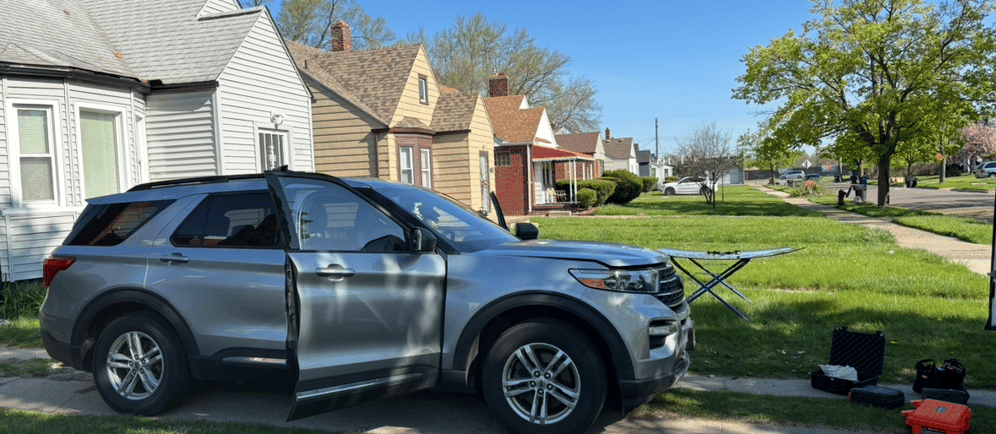How Weather Conditions Affect Your Auto Glass
MAINTENANCE AND CARE


Understanding Auto Glass Composition
The composition of auto glass plays a crucial role in its performance, safety, and overall durability. Primarily, there are two types of glasses used in vehicles: laminated glass and tempered glass. Laminated glass is predominantly used for windshields. This type consists of two layers of glass with a polyvinyl butyral (PVB) interlayer sandwiched in between. This construction not only enhances visibility but also provides an additional layer of security. In the case of a collision, laminated glass holds together, preventing shattering and keeping passengers protected from flying shards. Furthermore, this composition offers enhanced sound insulation and UV protection, which is critical for passenger comfort and safety.
Tempered glass, on the other hand, is typically utilized for side and rear windows. This type undergoes a heating and cooling process that makes it significantly stronger than regular glass. When broken, tempered glass shatters into small, blunt pieces, thereby reducing the risk of severe injuries. Its strength and safety features make it the preferred choice in automobile manufacturing; however, it lacks the laminating features that provide additional protection in dangerous situations. Both types of glass exhibit distinct structural properties, rendering them suitable for specific parts of the vehicle.
Extreme weather conditions can pose challenges to the integrity of these materials. For instance, abrupt temperature changes may lead to thermal stress, resulting in cracks or even complete failure of the glass. It is essential for vehicle owners to understand that maintaining the integrity of their auto glass is vital, especially during harsh winter or summer months. By comprehending the properties and composition of auto glass, one can better appreciate the implications of weather conditions on its performance and longevity. Additionally, being informed can facilitate timely maintenance and repairs, extending the lifespan of these critical components in automobiles.
Impact of Extreme Temperatures
Extreme temperatures serve as a significant factor in determining the integrity and longevity of auto glass. When exposed to high or low temperatures, auto glass undergoes thermal expansion and contraction. Glass materials expand when heated and contract when they cool, which can lead to structural stress. This stress is particularly pronounced in regions where temperatures fluctuate dramatically between day and night or across seasons.
In hot climates, the intense heat can cause auto glass to expand more than other structural components of the vehicle, such as the metal frame. This discrepancy can lead to pressure buildup and potentially result in cracks developing. For instance, a windshield may sustain damage if a vehicle is parked in direct sunlight for extended periods, and then exposed to air conditioning upon start-up. Similarly, in very cold temperatures, when the glass contracts, existing imperfections may worsen, leading to the formation of cracks. Research indicates that approximately 20% of windshield failures are attributed to thermal stress-related issues.
A notable phenomenon associated with extreme temperatures is thermal stress, which occurs when there are significant temperature differentials within the glass itself. For example, when a windshield is in direct sunlight while the rest of the vehicle remains cool, the abrupt temperature change can lead to sudden shattering. This effect is not only alarming but can also result in dangerous driving conditions if it occurs while the vehicle is in motion. Statistical analysis shows that vehicles operating in climates with significant temperature variations are at a higher risk of experiencing such fractures.
Ultimately, understanding the impacts of extreme temperatures on auto glass is essential for vehicle maintenance and safety. Drivers and vehicle owners in areas prone to high heat or severe cold should be especially vigilant in monitoring their windshields for any signs of damage and consider preventive measures to protect against thermal-related issues.
Effects of Cold Weather and Ice
Cold weather and icy conditions can significantly impact the integrity and performance of auto glass, often leading to various issues for drivers. One of the primary challenges faced during winter months is the buildup of ice on windshields and windows. When the temperatures drop, moisture in the air can freeze quickly, creating a layer of ice that obstructs the driver's view. This necessitates the use of defrosters or scraping methods to remove the ice, both of which pose risks to the glass itself.
The use of defrosters, particularly those that emit heat, can inadvertently lead to glass cracking. As the warmer air rapidly heats the glass surface, it can cause uneven temperature distribution, which generates stress within the material. This stress is often exacerbated in areas where there are existing chips or scratches, making it more likely that the glass will succumb to these temperature fluctuations and crack under pressure. Thus, it is essential for drivers to be cautious with temperature adjustments to prevent unnecessary damage.
Moreover, heavy snowfall can also create additional strain on auto glass. The weight of accumulated snow can lead to flexing or even shattering if the glass is already compromised. It is recommended to routinely clear any snow accumulation from windshields, side windows, and roofs to alleviate this risk. Regular maintenance, such as applying a high-quality sealant, can also aid in protecting auto glass from winter conditions.
To maintain the integrity of auto glass during winter, it is prudent to invest in quality windshield wipers that can effectively clear ice and snow. Additionally, parking in garage spaces or using windshield covers can help prevent ice buildup from forming overnight. Adopting these preventative measures can significantly enhance the durability of auto glass in colder environments.
Impact of Heat and Sun Exposure
The effects of heat and sun exposure on auto glass are significant and often underestimated by vehicle owners. Prolonged exposure to high temperatures can lead to the degradation of the seals and adhesives used in the installation of auto glass. These materials are designed to withstand varying weather conditions, but excessive heat can accelerate their deterioration. As the temperature rises, the integrity of the adhesive bonds may weaken, which can compromise the overall stability of the windshield or windows. This could potentially lead to leaks and even glass detachment under certain conditions.
Moreover, the sun's ultraviolet (UV) rays pose a risk not only to the adhesive but also to the tinting and interior components of the vehicle. Car tints, often installed to reduce glare and provide privacy, can fade and deteriorate due to extended UV exposure, leading to a less effective product and requiring costly replacements. Furthermore, the heat can cause the plastic and leather interior materials to crack or fade, diminishing the overall aesthetic appeal of the vehicle.
Health concerns are associated with excessive heat buildup within the car, particularly during warm weather. Elevated temperatures can lead to heat-related illnesses for individuals who may enter a vehicle that has been exposed to direct sunlight for extended periods. It is essential to recognize that the interior of a car can reach dangerous levels, surpassing the outside temperature. To mitigate these risks, vehicle owners should consider using sunshades, parking in shaded areas, and opting for window films that offer UV protection. Regular maintenance checks of the auto glass seals can also help ensure a safer driving experience, contributing to both the longevity of the car's interior and the health of its occupants.
Weather Events: Hail, Heavy Rain, and Wind
Severe weather events, particularly hailstorms, heavy rain, and strong winds, can significantly impact the integrity of auto glass. Hail, which can vary in size from small pellets to larger balls, poses a tangible threat to vehicle windows. When hail strikes glass, it can cause chips, cracks, or even shattering, depending on the severity of the storm and the size of the hailstones. Drivers should be particularly cautious during hailstorms, as the rapid accumulation of hail can obscure visibility and create hazardous driving conditions.
Heavy rain presents another set of challenges for auto glass. Although rainwater itself does not damage the glass, it can exacerbate existing chips and cracks. Water infiltration can expand the fissures, especially as temperatures fluctuate, leading to further deterioration over time. Furthermore, heavy rainfall can create debris, such as fallen branches or other objects, which might pose a risk if they strike the glass during a storm.
Wind, particularly when accompanied by heavy rain or storms, can also compromise auto glass integrity. Strong gusts can bring debris and increase the likelihood of damage from objects being hurled through the air. Additionally, high winds can create pressure differences that might affect the structural stability of the glass. To protect vehicles during inclement weather, drivers should consider parking in secure locations, using car covers, or even employing weather-resistant films if they live in areas prone to severe storms.
Understanding the potential damage caused by these extreme weather events is essential for vehicle owners. Implementing precautionary measures can help mitigate the risk to auto glass, ensuring that drivers remain safe and that their vehicles maintain optimal condition despite the challenges posed by Mother Nature.
Preventive Measures and Maintenance Tips
Maintaining the durability of your auto glass amidst varying weather conditions requires proactive measures and regular upkeep. Regular inspections should form the cornerstone of your maintenance routine. It is advisable to inspect your auto glass frequently, checking for any chips, cracks, or other damage that may worsen over time, especially when exposed to extreme temperatures or severe weather events. Addressing these minor issues promptly can mitigate the risk of more extensive and costly repairs in the future.
In addition to routine inspections, utilizing sunshades during hot weather can significantly extend the lifespan of your auto glass. Sunshades can help protect the glass from excessive heat and UV rays, which can lead to fading and degradation. It is equally important to manage the humidity levels inside your vehicle, as high levels of moisture can cause fogging that impairs visibility. Consider using dehumidifiers or ensuring the vehicle's ventilation system is functioning correctly to maintain a comfortable environment.
When winter arrives, safely removing ice and snow from your auto glass becomes essential. It is recommended to use a plastic scraper rather than metal, which can scratch the surface. Thoroughly defrosting the glass using the vehicle's heating system will ensure optimal visibility. In addition, avoiding hot water to de-ice the glass is crucial, as rapid temperature changes can lead to cracks or shattering. Instead, employing a mixture of vinegar and water can effectively melt ice without damaging the glass.
By implementing these preventive measures and maintenance tips, you can significantly enhance the durability and functionality of your auto glass while ensuring safety and visibility throughout the year.
Conclusion and Final Thoughts
In this exploration of how weather conditions affect auto glass, we have underscored the multifaceted impacts that environmental elements have on the integrity and maintenance of vehicle windows. From temperature fluctuations and ultraviolet rays to precipitation and high winds, each factor plays a significant role in the health of auto glass. Understanding these effects is crucial for ensuring both safety while driving and the longevity of your vehicle's glass components.
Extreme temperatures can lead to stress fractures, while UV rays may cause gradual degradation of windshield clarity. Additionally, winter weather, characterized by ice and snow, presents unique challenges, such as the potential for chips and cracks due to thermal shock. Rain and humidity can also compromise visibility and lead to potential hazards on the road. Recognizing these weather-related risks can empower vehicle owners to take preventive measures and adopt best practices for auto glass maintenance.
Moreover, the proactive care of auto glass should include regular inspections and timely repairs. Keeping an eye on changing weather patterns can also inform when to take additional precautions, like covering the windshield during extreme weather conditions. Overall, being attentive to how weather affects your auto glass can lead to safer driving experiences and a reduction in repair costs over time. We encourage readers to remain vigilant and engage in preventive strategies to protect their vehicles against the rigors of the elements. By prioritizing auto glass care, drivers can enhance their safety and optimize their overall vehicular experience.
